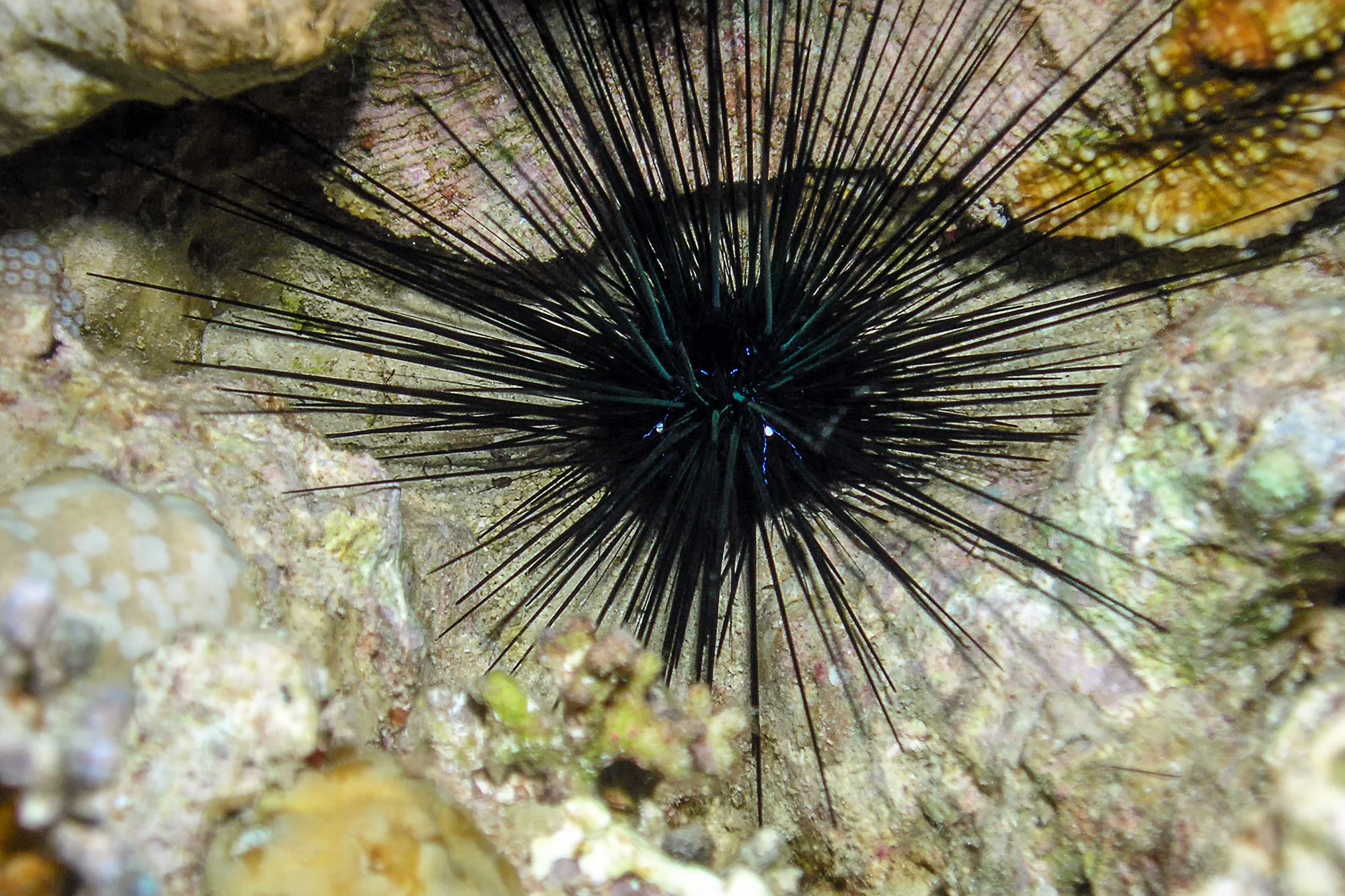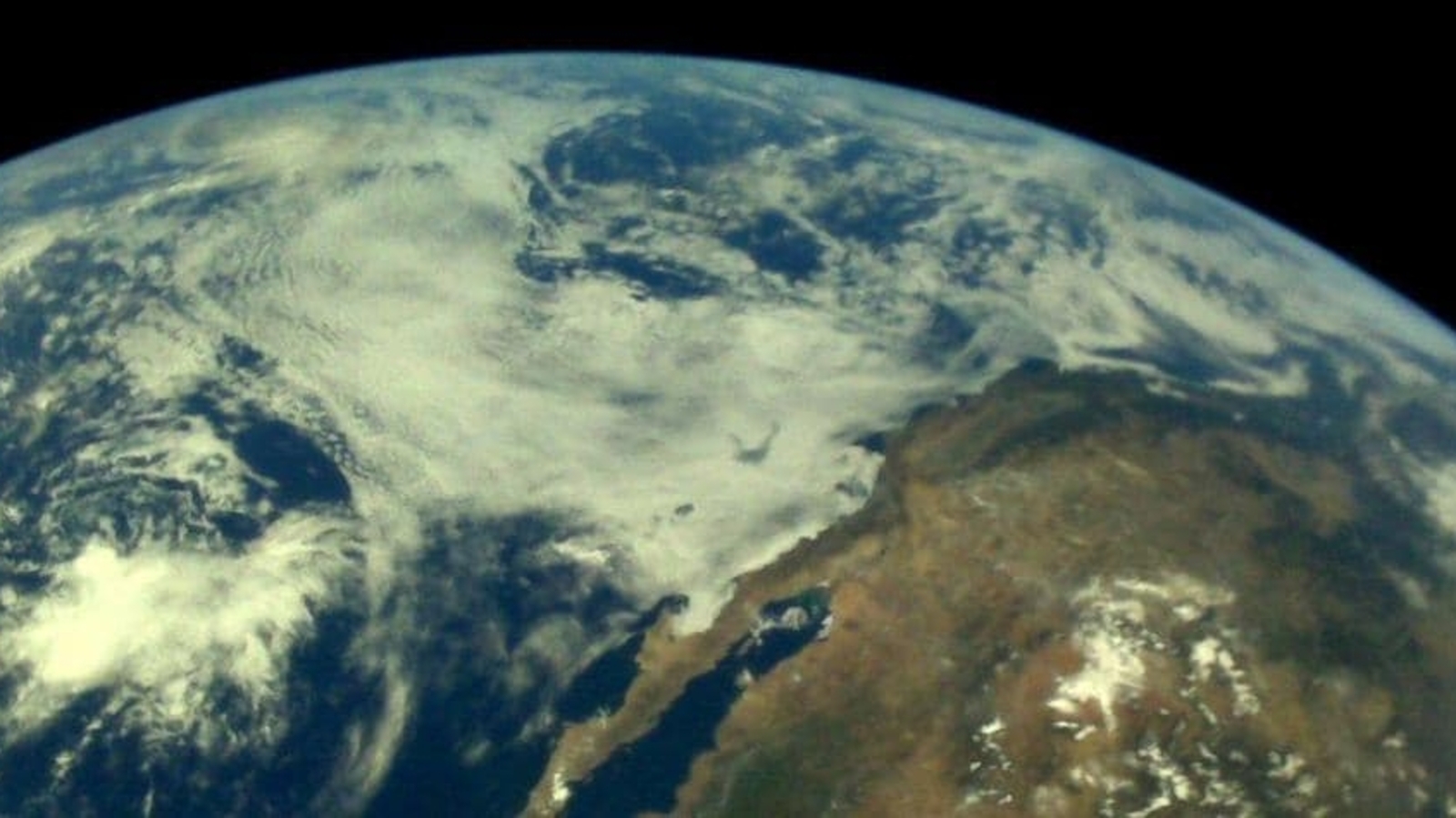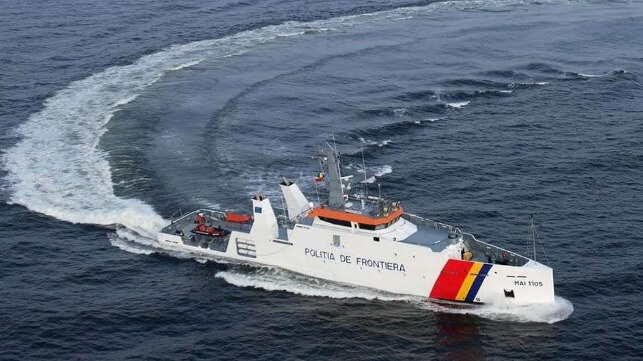
Un organism unicelular, scuticociliat, a fost identificat ca fiind cauza morții în masă în 2022 a aricilor de mare cu țepi lungi în Caraibe și coasta de est a Floridei. Acești arici sunt esențiali pentru sănătatea recifelor de corali, iar descoperirea ridică semne de întrebare cu privire la prezența ciliatelor, condițiile lor de creștere și impactul potențial al acestora asupra altor specii. Fotografie cu arici de mare lung și spinos (Diadema antillarum).
Moartea în masă a aricilor de mare cu spin lung – o pierdere care amenință sănătatea recifelor de corali din Caraibe până pe coasta de est a Floridei – a fost cauzată de un organism unicelular numit ciliat.
Vânătoarea unui ucigaș s-a încheiat în 2022, care a distrus aricii de mare cu țepi lungi din Caraibe și de-a lungul coastei de est a Floridei. O echipă de cercetători organizată de Mia Breitbart, profesor universitar distins la Colegiul de Științe Marine din Universitatea din Florida de Sud, a identificat un organism unicelular numit ciliar ca fiind cauza morții masive a unui animal marin vital pentru sănătatea recifului de corali.
Descoperirile lor sunt publicate pe 19 aprilie în revista Nature
Ciliate culture viewed under the microscope. Credit: Mya Breitbart USF College of Marine Science
“We’re beyond thrilled to get to the bottom of the 2022 mystery and a bit stunned we did it so quickly,” said Breitbart, senior author on the Science Advances study and an expert in marine genomics. “We had a great team in place and the tools needed to do the ocean science equivalent of a forensic investigation.”
Ciliates are microscopic organisms covered in hair-like structures called cilia that help them move and eat. They are found almost anywhere there is water and most are not disease-causing agents. However, this specific species of ciliate – called a scuticociliate – has been implicated in die-offs of other marine species, such as sharks, in the past.

Photo compilation showing the same sea urchin before and after infection with the ciliate in the USF aquarium research facility. Credit: Makenzie Kerr USF College of Marine Science
Examining urchins collected from 23 sites in the Caribbean, the research team used a series of techniques to confirm the source of the die-off event.
After identifying the ciliate in every affected urchin specimen using genomic techniques, the team grew ciliates in the lab and performed infection experiments at the USF College of Marine Science. When the pathogen was introduced to otherwise healthy urchins in an aquarium tank, the urchins died within a few days – replicating what was taking place in the ocean and confirming the ciliate as the disease source.

DaSc-affected sea urchin, Aruba, August 2022. Credit: Ian Hewson Cornell University
“We’re excited to share this information with everyone, from reef managers to additional scientists so we can explore it further and try to stop its spread,” Breitbart said.

Mya Breitbart (USF) viewing the ciliate culture by microscopy. Credit: Makenzie Kerr USF College of Marine Science
The long-spined sea urchins inhabit shallow tropical waters and feed on algae that would otherwise destroy a reef. They began to lose their spines within days of contracting an unknown disease and died in droves starting in January 2022.
A similar die-off event took place in the early 1980s, which wiped out 98 percent of the long-spined sea urchin population. The culprit of that die-off remains a mystery.
Breitbart first got the call about the unfolding die-off at the end of March 2022. She immediately assembled a team consisting of Ian Hewson, lead author on the publication and a marine ecologist at Cornell University; Christina Kellogg, a microbiologist from the U.S. Geological Survey in St. Petersburg, Fla. who has worked extensively on coral reef diseases; and USF graduate student Isabella Ritchie.
“At the time, we didn’t know if this die-off was caused by pollution, stress, something else – we just didn’t know,” said Hewson, an expert in diseases that cause mass die-offs of sea stars, who flew from New York to the Caribbean Islands to observe the situation.
Even with the source of the mysterious die-off uncovered, questions still remain. For example:
- Is this ciliate new to the area, or was it there prior to the die-off?
- If it has been there, what environmental conditions favored its growth and why did it infect the urchins?
- Can it affect other species of urchins?
„O teorie pe care o avem este că ciliatul a crescut bine în condițiile de productivitate ridicată observate în Caraibe când a început să se estompeze”, a spus Kellogg. „Suntem, de asemenea, curioși de faptul că există o oarecare suprapunere în unele dintre zonele geografice în care a avut loc această extincție și unde recifele de corali sunt în declin din cauza bolii pierderii țesutului coralilor pietroși”.
Referință: „Agentul scuticocilat cauzează mortalitatea în masă a Diademei Antillarum în Marea Caraibilor” de Ian Hewson, Isabella T Ritchie, James S Evans, Ashley Alterra, Donald Berenger, Irene Bowman, Marilyn Brandt, Kayla A. Budd și Rolio A. Camacho, Thomas O. Cornwell, Peter D. Kimani A. Kitson-Walters, Patricia Kramer, Judith C.Lang, Harilaos Lessios, Lauren Liddy, David Marancik, Stephen Nimrod, Joshua T. Patterson, Marit Pistor, Isabel C. Romero, Rita Sellares-Blasco, Moriah LB Sevier, William Sharp, Matthew Souza, Andrina Valdez-Trinidad, Maren van der Laan, Brian Villanova-Cuevas, Maria Villalpando, Sarah de Von Huene, Matthew Warham, Tom Weyers, Stacy M. Yanong, Soumira Zambrano, Alise Zimmerman, Mia Breitbart 19 aprilie 2023 Disponibil aici. Știința avansează.
DOI: 10.1126/sciadv.adg3200
Cercetarea a fost finanțată de Fundația Națională pentru Știință, Centrul de Răspuns Rapid Atkinson pentru Viituri Durabile, AGGRA, Administrația Națională Oceanică și Atmosferică, Fundația Națională pentru Pește și Faună Sălbatică, Rezervația Marină din Florida Keys și Comisia pentru Pește și Faună Sălbatică din Florida.

„Mândru pasionat al rețelelor sociale. Savant web fără scuze. Guru al internetului. Pasionat de muzică de-o viață. Specialist în călătorii.”





More Stories
Județul Los Angeles a raportat un caz de hepatită A la un Beverly Hills Whole Foods
Mars Rover al NASA urmează calea a ceea ce pare a fi un râu antic
Noua tehnologie solară transformă gazele cu efect de seră în combustibili valoroși